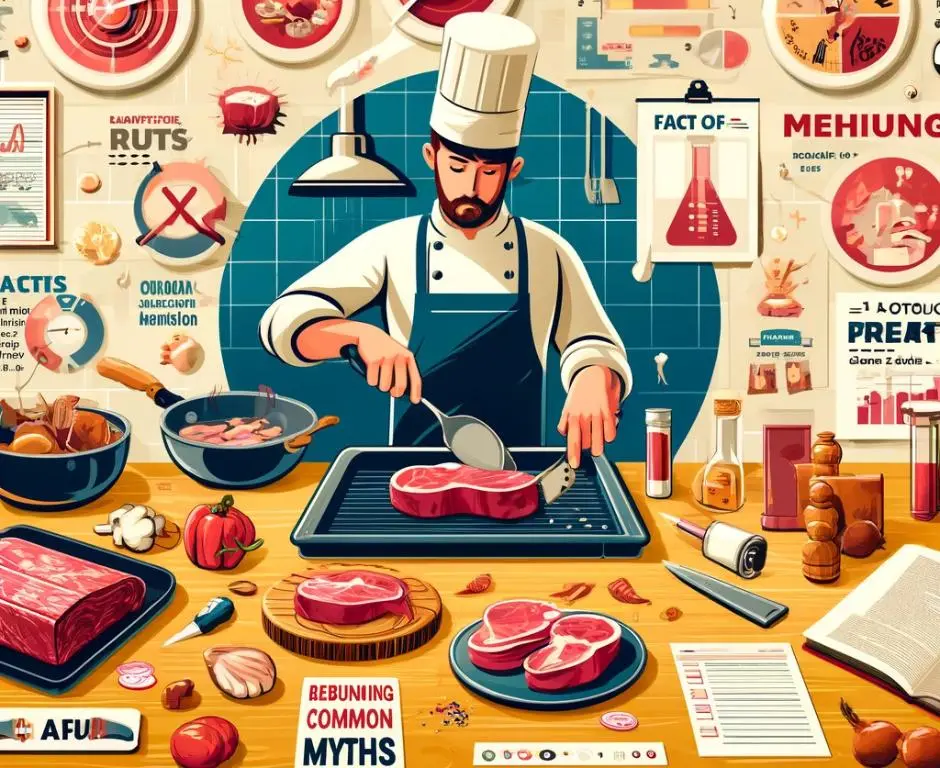Cooking meat can be simple, but common myths might lead you astray. Let’s set the record straight with some facts and helpful tips. This will make your meat dishes tastier and safer!
Myth: Searing meat seals in juices.
Fact: Searing meat doesn’t seal in juices, but it does make your meat tastier. Searing creates a delicious, brown crust and helps build a flavorful base for sauces. Searing adds depth to your dish, so don’t skip it!
Myth: Marinating meat in bottled Italian salad dressing makes it juicy and tender.
Fact: Marinating meat in these dressings doesn’t work well. They are too acidic and can make your meat mushy instead of tender. Also, they often contain sweeteners and stabilizers, which can give your meat a weird, unnatural taste. It’s better to use fresh marinades you make at home.
Myth: Pink pork will make you sick.
Fact: Times have changed, and so has pork. Today’s pork is leaner thanks to selective breeding. Cooking it until it’s gray makes it dry and tough. Cook your pork to 145 degrees, and it’s safe to eat with a hint of pink. This keeps it juicy and flavorful.
Myth: Poultry should be rinsed before cooking.
Fact: Don’t rinse your poultry; it’s not safe. Washing poultry can spread bacteria around your kitchen. The best way to ensure your poultry is safe to eat is by cooking it properly. This kills all the bacteria without spreading them around.
Myth: A pop-up timer is the best way to gauge the doneness of a turkey.
Fact: Pop-up timers might actually overcook your turkey. Instead, use an instant-read thermometer. Check the temperature in the thickest part of the breast and thigh. The breast should be 165F (74C) degrees, and the thigh should be 175F (79C) degrees for perfect doneness.
Myth: Salt is salt—it doesn’t matter which salt you use when seasoning or cooking meat.
Fact: Not all salt is created equal. Use table salt for everyday cooking because it dissolves easily and is affordable. Save kosher and sea salt for finishing dishes. Their larger grains add a burst of flavor right before eating. Remember, you can’t swap one for the other without adjusting your measurements because of their different grain sizes.
By busting these myths, you can improve your cooking skills and enjoy better, safer meals. Always look for reliable cooking tips and keep experimenting in the kitchen!
